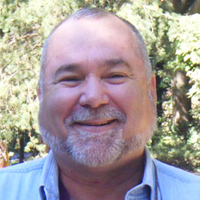
SHORTCUT: http://tinyurl.com/2014-Open-Letter
This started out as an a letter to the collective leadership of a very promising open source software company, took a side step toward Microsoft, and finally made the leap here as a general open reference.
Earth Intelligence Network, A Virginia Non-Profit (501c3) Corporation, is seeking endowed alliances that might wish to advance the craft of public intelligence in order to create a prosperous world at peace.
– – – – – – –
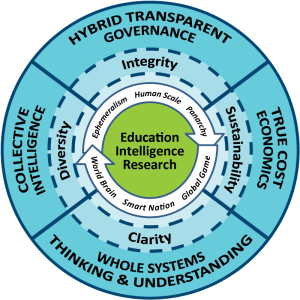
For a quarter century I have been a proponent for intelligence reform – for a revolution in the I of IT that moves beyond the industrial era commoditization of humanity toward the information era actualization of humanity's full potential to create infinite wealth, a prosperous world at peace. Peter Drucker called for this (a focus on the I instead of the T) in Forbes ASAP on 28 August 1994.For the past decade I have been immersed in the possibilities of collective intelligence applied with integrity. I believe many paths are converging. Here to the side is the latest depiction of our larger vision for integrating education, intelligence (decision-support) and research.
This open letter outlines seven goals and seven actions bracketing my explicatory vision with graphics. I invite one and all to consider this. My email is at the end of this post. St.
INTRODUCTION
01 Transparent Trusted Security. The Edward Snowden revelations and the growing international public dismay over mass surveillance and contrived back doors (e.g. RSA for $10 million) have called into question the integrity and efficacy of all “trusted” communications and computing security. Data at rest encryption, data communications encryption, and the privacy of all data transactions are all in demand now more than ever. There is an immediate opportunity to craft an open source solution that opens millions of potential client doors, while at the same time, not so paradoxically, unifying humanity. Transparency creates truth, truth creates trust, and trust creates wealth.
02 Open Source Everything Architecture. It’s not enough to offer open source software or even open source software and open source hardware. It we are to achieve an affordable inter-operable and infinitely scalable local to global ecology of information-sharing and sense-making, we need to both advocate and make possible open source everything from open cloud and open data to open spectrum and open standards.
03 Open Source Analytic Tool-Kit (18 Functions). Big data is a form of industrial-era waste. Machines are only as smart as their dumbest algorithm. The human brain – and the actual connection of the five billion poor with knowledge one cell call at a time are the center of gravity. Sense-making – creating intelligence (decision-support) is the lever for eradicating corruption and waste. I am not referring to Talend, Ikahow, or Open Web Analytics, but rather to an integrated desk-top toolkit with 18 functions that has access to the totality of human knowledge, online and offline, in all languages.
04 Eight Information Tribes, Without Borders. We have created a modern tower of Babel through a fragmentation of the information world both physically and digitally. There are eight information tribes that do not share information effectively. At the same time, absent a trusted cloud that can hold all C drives and emails (not Google!) we will continue to “hide” roughly 80% of what we know in “cubbies.”
05 Open Source Secure Cloud – a Six Bubble Concept. Each client is also a member of the public. Missing from all architectures today are the core concepts of public intelligence (decision-support, especially true cost economics), participatory policy, participatory budgeting, and the GlobalGame, a means for all individuals to play themselves in relation to real world policy and budgeting decisions. Such a cloud will never be impervious to legal penetration, but can at least become technically secure, provided the ethics of those responsible for trusted computing and communications remain impervious to subversion.
06 Geospatial & True Cost Foundation for All Data. I told the US Government in 1988 that they needed geospatial attributes for every datum or they would never achieve near-real-time machine-speed data fusion. CrisisMappers is now leading the way; there is a great deal that could be done by integrating their Ushandi architecture and their human engagement concepts into the client service architecture. ESRI, Monsanto, and Google are all a mix of good and evil – this needs a long-term freedom plan.
07 Migrating Agency Back to the Individual. The internet was originally conceptualized as .net, .org, .edu, and .com. That is still a useful construct, but all four need to be brought together to create a working world brain. Each of the seven elements proposed here makes possible the final architectural rendering and an affordable inter-operable, and scalable engineering implementation. World Brain is however a tired concept – Protocolariat is cooler.
This memorandum discusses each of the above, and concludes with action points – what any structured organization or network with might do.
BODY
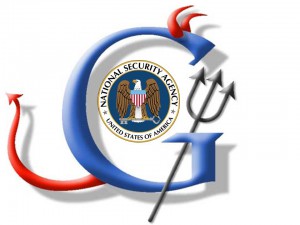
01 Transparent Trusted Security. Nothing created by any US-based corporation, or any former employee of NSA, or for that matter anyone anywhere that is not totally open source and subject to rigorous independent testing, is available right now. There is a huge need for a comprehensive global to local solution that includes data at rest encryption and complete protection of all related transactional information. I am the author of the 1994 letter to the White House sounding the alarm, and the 2010 article in Homeland Security Today on the cyber-scam being foisted on the public by NSA and the US Government. There is a network of world-class coders that would respond to a structured challenge, should a major open source enterprise might care to inspire a new public offering. Constant counterintelligence against penetration will be needed.
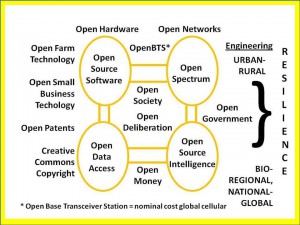
02 Open Source Everything Architecture. We good people all share a devotion to open source because in transparency one finds truth, and from truth comes trust. Transparency and truth enable true cost economics and trust enable agile wealth creation – a Nobel Prize was awarded to the economist that demonstrated that trust lowers the cost (and time) of doing business. My last book, THE OPEN SOURCE EVERYTHING MANIFESTO: Transparency, Truth, & Trust, lists over 50 “opens.” Here I illustrate a few of them with the observation that open source software demands open source everything – cloud, data, hardware, spectrum, etcetera – if it is to be infinitely affordable, inter-operable, and scalable. If we are to achieve local to global information-sharing and sense-making, this is a strategic architectural imperative, IMHO. Hence, I am suggesting that instead of just being best in class at open source software and hardware, one must become best in class across the entire rainbow of opens.
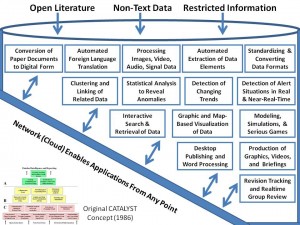
03 Open Source Analytic Tool-Kit. I have observed hundreds of millions of dollars being wasted on multiple approaches to the desktop (now multi-platform) analytic tool-kit. The waste stems from at least three short-falls. First, a failure to do a sincere functional requirements document across all stakeholder elements and across all data forms, disciplines (mediums) and domains (mission areas). Second, a persistent commitment to proprietary solutions, with single agencies often funding multiple variations across different divisions, all uncoordinated. Third, a refusal to treat geospatial and true cost economics as foundation elements that must be integrated into every line of code. Here I provide a summary slide from Computer-Aided Tools for the Analysis of Science & Technology (CATALYST). We knew what we needed in 1985. Distracted and corrupt leaders refused to accommodate this need. In 1992 we approached Sun Microsystems (John Gage) and tried to get them to move beyond Open Office toward this larger vision, without success. Just as shared CPUs are possible, we need to get to shared brains. Computers hit the wall in the 1970's — it's time to de-commoditize the humans.
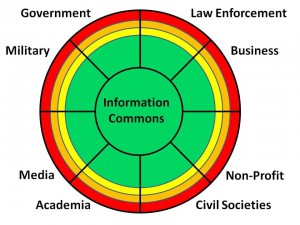
04 Eight Information Tribes, Without Borders. For nearly a quarter century I have been making the point that government is the beneficiary of information created and curated by others. It is not the benefactor. In my second graduate thesis studying three Embassy Country Teams and their home-based agencies, I found that they tended to collect no more than 20% of the relevant information, and then spill 80% of that in how they handled it. As we confront the growing revolutionary tendencies around the world — generally inspired by a concentration of wealth and a loss of government legitimacy — we need to advance multinational information-sharing and sense-making. We are at a critical juncture in local to global governance.
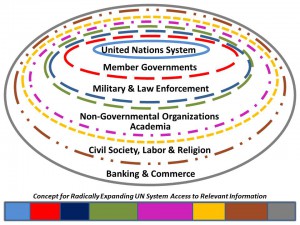
Hybrid public governance that integrates what all eight tribes know is essential. As integrity is achieved across various communities, it will become possible to collect, process, analyze, and develop into ethical evidence-based decision-support all relevant information – 100% instead of 2%. The red, orange, and yellow circles represent different levels of protected information. The green commons is the vast untapped archipelago of useful information now fragmented across dysfunctional ecologies that treat most of their information badly (for example, core references lacking persistent URLs and also not integrated into a larger cloud from which unstructured data can be extracted). Google has lost the trust of hundreds of millions – there is still a need for moving C drives and email info the cloud, but vastly greater end-user control and assured security is required.
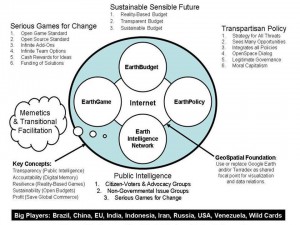
05 Open Source Secure Cloud – a Six Bubble Concept. In 2006 I was moved to create Earth Intelligence Network, a 501c3. 24 of us, all volunteers, created the “six-bubble” concept for addressing local to global information in a manner that would be responsive to the public interest. I am an intelligence professional – and perhaps the first to define 21st Century approaches that create Smart Nations and enable participatory decision-making and budgeting for all demographics on all topics at all levels. As best I can tell there is no company on the planet – and certainly not IBM – thinking along these lines. There is a public functionality that is required, one that enables every citizen to play a role in every public decision at each level from local to global, that they wish to join. The GlobalGame has been roughed out by Medard Gabel, co-creator with Buckminster Fuller of the analog World Game, and with some funding from me, creator of the digital EarthGame™ that serves as the geospatial and time-based means of connecting all dots to all people all the time, and in the process, assuring consideration of true costs economics and trade-offs across policy and stakeholder domains. The larger strategic concept provides a means for designing individual and organizational structures so that they can “jack in” as an organization, and both contribute their own unique information holders to the extent desired, while also harvesting from the commons all that they can use.
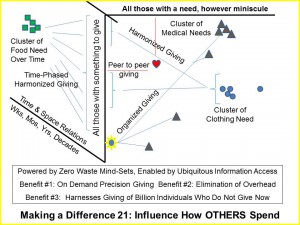
06 Geospatial & True Cost Foundation for All Data. In 2007 I was invited to be the capstone presenter to the Amazon Developers Conference. In the same year I was the keytone to Gnomedex, also in Seattle. The two presentations bracket a persistent ambition of mine, to be able to connect dots to dots, dots to people, and people to people, irrespective of the language, data structure, or any other variable. Although I had a full house at both events, Amazon’s leadership was not ready to think about the urgency of treating humans as critical nodes in any global to local cloud. CrisisMappers does it best, fully integrating hand-held devices with SMS in an language, full embrace of the distributed diaspora for that language, and easy validation and then ingestion of photographs from millions of hand-held devices. In combination with open global geospatial data such as may come available from the flock of 28 nano-satellites just launched by Planet Labs, a San Francisco start-up. Geospatial matters for multiple reasons, including machine-speed data fusion, real-time tasking of people in a specific spot, real-time connection of people in proximity to one another, and so on. ESRI and Monsanto are making acquisitions in this arena that are both proprietary and predatory. There is an urgent need to displace both of them across the geospatial and climate arenas, this has huge implications not just for disaster relief, but for peaceful preventive measures, climate change remediation, and participatory development. What emergent by various parties including CrisisMappers with respect to the “last mile” and local to global communications is brilliant. Much more can be done, and this can be scaled in a manner that will quickly disintermediate humanitarian assistance and development assistance, substantially increasing the percentage of donated funds that reach the five billion poor. We are so very close to being able to create the World Brain, with net, org, com, and edu iterations, all sharing information. I continue to be interested in Amazon as a core player because its authors, reviewers and readers in every postal district across the planet, are a layer of human intelligence that could not be easily organized from scratch.
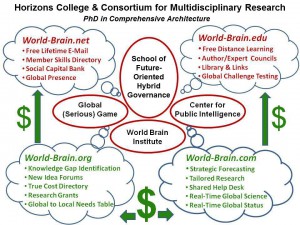 07 Creating the World Brain. From H.G. Wells to many others, the concept of a World Brain has been under consideration for over a century. Now we are in a position to actually create the World Brain, and millions of localized nodes for public intelligence. The World Brain is emergent, retarded at every turn by a mix of government and corporation corruption. Few appear to appreciate the insights of C. K. Prahalad (The Fortune at the Bottom of the Pyramid) among others, to wit, the five billion poor have an economy that is four times that of the one billion rich — empowering the five billion poor is how we create infinite wealth, a prosperous world at peace. I have been inspired by the works of many others, not least those who contributed to the formation of Earth Intelligence Network and its core concepts for harmonizing human thinking and understanding. One starting point is a school of future-oriented hybrid governance such as depicted here.
07 Creating the World Brain. From H.G. Wells to many others, the concept of a World Brain has been under consideration for over a century. Now we are in a position to actually create the World Brain, and millions of localized nodes for public intelligence. The World Brain is emergent, retarded at every turn by a mix of government and corporation corruption. Few appear to appreciate the insights of C. K. Prahalad (The Fortune at the Bottom of the Pyramid) among others, to wit, the five billion poor have an economy that is four times that of the one billion rich — empowering the five billion poor is how we create infinite wealth, a prosperous world at peace. I have been inspired by the works of many others, not least those who contributed to the formation of Earth Intelligence Network and its core concepts for harmonizing human thinking and understanding. One starting point is a school of future-oriented hybrid governance such as depicted here.
These are a few of the ideas I would like to discuss with anyone concerned about existential risk, the future of humanity, and now best to profit from integrity for the many instead of corruption for the few.
Below I list some possible actions for funding and discussion. Our original Earth Intelligence Network concept has a budget plan for $12.5 million a year; in combination with the above concept for a World Brain network, it should be self-funding by year four and thereafter scale quickly.
CONCLUSION: ACTIONS FOR CONSIDERATION
These are offered on a rising scale of investment. All of these ideas impact on how others spend trillions of dollars, and pave the way for helping the five billion poor create infinite wealth.
LEVEL 1. HQS Event. Engage Earth Intelligence Network (EIN), a 501c3, to provide a one person exploratory road show, to engage with key staff in one location, as a test of how the ideas might inspire your network to achieve an order of magnitude increase in its business base while becoming the industry gold standard for 21st Century information operations. Robert David STEELE Vivas
LEVEL 2. BRICS Road Show. As above, but including the local staffs in Brazil, China, and India, so as to focus on the five billion poor whose annual aggregate incomes is four trillion dollars a year, four times the annual aggregate income of the one billion rich (one trillion dollars a year).
LEVEL 3. Internal Business Planning. Engage EIN to work with specific mission area leaders within your organization to devise an implementation plan for adding some or all of the seven objectives to your mid-term and long-term business plan.
LEVEL 4. YodaCon – a Global Conference and Network. Create a new meme and a new international conference and network devoted to Open Source Everything (OSE) and the secure integration of all information in all languages all the time. Focusing particularly on education, intelligence (decision-support), and research in relation to the ten high-level threats to humanity across the twelve and more policy domains, become the world’s leading advocate for transparency, truth, and trust in information operations, with the specific goal of empowering the five billion poor to create infinite wealth. I managed a global conference for 20 years and am confident such an event on these issues has potential.
LEVEL 5. University Consortium and World Brain Institute. Identify a university in each of the major countries, with the US, UK, Brazil, China, India, and Singapore certain to be included, and create the World Brain Institute to obtain the world brain edu (.net, .org, and .com are owned by Robert and available for donation or purchase). Fund the inception and create a challenge grant program. There is no lack of money from donors, what is lacking is a compelling vision and narrative that we can create together. My Washington Academy of Sciences presentation offers additional insights.
LEVEL 6. Alternative Internet. Invite the BRICS, who are creating their own Internet, to embrace these ideas and implement them, along with EIN’s concepts for free cell phone service and Internet access for all, national call centers and distributed diaspora networks to educate the poor one cell call at a time, and true cost economics as the foundation for local to global participatory policy-making and budgeting.
LEVEL 7. Open Source Agency (OSA). Invite each of the BRICS to commit to an annual contribution of $250 million to create the Open Source Agency, a global endeavor that will fully fund and support the United Nations Open-Source Decision-Support Information Network (UNODIN), and provide complete information technology support to each of seven continental Multinational Decision-Support Centres. This has real-estate and political power implications in Washington, D.C., New York City, and London. Such an agency has been pre-approved by the Office of Management and Budge (OMB) at IOC $125M and FOC $3B. If a major corporation leads the way, it could conceivably define and capture the OSA and teach the US Government to do the right thing instead of the wrong things righter.
My email is robert.david.steele.vivas [at] gmail [dot] com. Skype by arrangement is robert.david.steele.vivas.
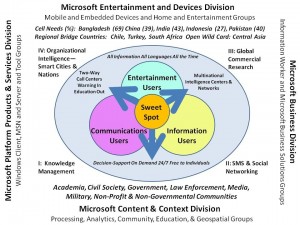
In passing: below is the Microsoft implementation (a new division, this one would make money — Microsoft is being carried by Windows, which is on its way to the extinction tar pit. If and when Windows is blown up by an open source alternative providing the eighteen CATALYST functionalities and the Open Source Everything information-sharing ecology, Microsoft will be an empty shell.
See Also:
Robert Steele Biography & Linked Publications



